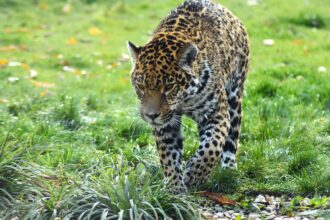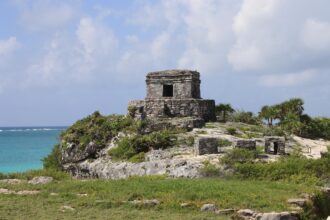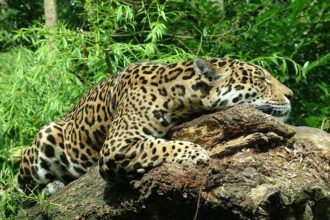The Power of Visual Narratives in Fundraising Campaigns
Photography has an immense ability to tell stories that resonate emotionally with viewers, especially when it comes to fundraising campaigns focused on wildlife conservation. One such poignant subject is the jaguar, a majestic creature whose habitats are increasingly threatened. Utilizing storytelling through photography not only raises awareness but also drives donations necessary for conservation efforts.
The Significance of Jaguars in Ecosystems
Jaguars play a crucial role within their ecosystems, serving as apex predators that help regulate prey populations. Their presence is an indicator of a healthy ecological community. Unfortunately, these magnificent animals are endangered, primarily due to habitat destruction, poaching, and climate change. Highlighting their plight through compelling photography can effectively engage communities and inspire action.
Crafting High-Impact Visual Content
Effective photographic storytelling involves more than capturing stunning imagery—it requires a strategic approach that resonates with potential donors. Here are critical steps to creating high-impact visual content focused on jaguar habitats:
1. Focus on Authenticity
Authentic storytelling is vital for building trust and connection. Photographers should immerse themselves in the jaguar’s environment, documenting not only the animal but also its habitat. Images that capture daily life in these ecosystems—lush forests, riverbanks, and the symbiotic relationships among various species—tend to evoke a deeper emotional response in viewers.
2. Showcase the Threats
Highlighting the challenges that jags face is equally crucial. Powerful visual narratives can depict the impact of deforestation, agricultural expansion, and urban development on jaguar habitats. Photographs of clear-cut forests, encroached land, or wildlife captured in traps can be harrowing yet motivating, convincing viewers of the urgency for action.
3. Create a Connection with Local Communities
Incorporating the stories of local communities who share the habitat with jaguars adds another layer of depth to the narrative. Photographs showing locals engaged in conservation efforts or balancing their livelihoods with the need to protect the jaguar can humanize the issue and make it relatable. This approach encourages potential donors to support not just wildlife but also the people intertwined with their conservation.
4. Use High-Quality Imagery
To capture attention effectively, photographers should prioritize high-quality images that are visually striking. Employing various techniques such as macro photography, aerial shots, and wide-angle views can create a diversified portfolio. Utilizing the appropriate lighting and framing emphasizes the beauty and majesty of jaguars in their natural habitats.
Integrating Storytelling Elements
Effective storytelling goes beyond just images; it requires a narrative structure that engages viewers. Below are components that enhance the storytelling aspect of photography in fundraising campaigns:
1. A Compelling Narrative Arc
Every great story has a beginning, middle, and end. A successful fundraising photo campaign might begin with an introduction to the jaguar and its habitat, explore the challenges it faces, and conclude with how donations can make a tangible difference.
2. Incorporate Testimonials and Quotes
Including testimonials from conservationists, local communities, or past donors can add credibility and emotional weight to the campaign. These voices can be paired with their portraits or situational photographs that emphasize their connection to jaguars.
3. Appeal to Emotions
Evoking emotions through photography significantly enhances the effectiveness of a fundraising campaign. Close-up shots of jaguars in their habitat, particularly mothers with cubs, can tug at heartstrings and stimulate empathy among viewers.
Distribution Channels for Maximum Reach
Once high-quality photographic content is created, effective distribution is key to reaching a wider audience. The following avenues are essential for maximizing visibility and engagement:
1. Social Media Platforms
Utilize platforms like Instagram, Facebook, and Twitter to showcase images, videos, and stories about jaguar conservation. Engaging content encouraged viewers to share, amplifying reach exponentially. Hashtags related to wildlife conservation can also attract a larger audience interested in environmental issues.
2. Website and Blogs
Creating a dedicated section on a conservation organization’s website allows for extensive storytelling. Photographers can include detailed captions, backstories, and links to donate directly, providing a seamless path for contribution.
3. Email Campaigns
Incorporating stunning photographs within email newsletters can capture attention and drive clicks. Personalizing these communications, along with sharing the narrative of jaguars and updates on conservation efforts, keeps supporters engaged.
Collaboration with Influential Partners
Partnering with wildlife organizations, local governments, and influencers in the environmental field can enhance the campaign’s credibility. These collaborations can bring additional resources for marketing, distribution, and ultimately reach a more extensive donor base.
1. Workshops and Exhibitions
Hosting events where the photography is showcased can create community involvement and awareness. Interactive workshops can educate attendees about the importance of jaguar habitats, driving home the message behind the visual content.
Tracking Impact and Engagement
Monitoring the effectiveness of a photography-based fundraising campaign is crucial for future initiatives. Utilize analytics tools online to gauge engagement rates, track donations, and understand viewer interactions with the content. Feedback from donors and supporters can also provide valuable insights into what aspects of the campaign resonated the most.
The Call to Action
Finally, every storytelling campaign through photography should have a clear call to action. Whether it’s donating, sharing stories, or participating in local conservation efforts, encouraging viewers to take concrete steps ensures that the story continues beyond the images and fosters a sense of community dedicated to protecting jaguars and their habitats.







